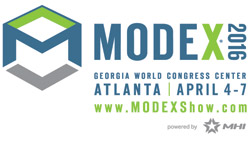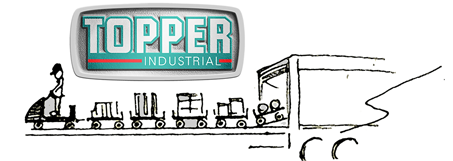Fork Truck Free News – December 14, 2015 – Vol. 1, Issue 4
Proof of Fork Truck Free: $44.48B North American Robotics Market
Materials handling is the largest segment by function in the industrial robotics market. Industrial robotics market will reach $44.48 billion by 2020 and North American robotics market sets new records in the first half of 2015.
According to Modern Materials Handling a new report by Allied Market Research, the global industrial robotics market is expected to grow at a CAGR of 5.4% during the forecast period from 2013 to 2020, reaching a market size of $41.17 billion in 2020. The market was valued at $26.78 billion in 2012.
Titled “Industrial Robotics Market (Products, Functions, Applications and Geography) – Global Analysis, Industry Growth, Trends, Size, Share, Opportunities, and Forecast – 2013 – 2020,” the report indicates rapid growth in automation demands.
Industrial robotics are expected to be used in alternative application areas in growing markets. The key area such as electronics, which is still growing at an increasing rate, has witnessed penetration of industrial robotics in a significant manner. Another key application that industrial robotics might find penetration is healthcare. Nanorobotics is gaining importance in the field of industrial robotics.
Based on industries served, the market is segmented into automotive industry, electrical & electronics, chemical, rubber & plastics, machinery, metals industry, food & beverages, and precision & optics. Among these, automotive industry segment dominated the market in 2012 at $7.37 billion. The food and beverages segment is expected to witness highest growth rate of 6.9% over the forecast period owing to rising food and beverages industry.
On the basis of functions performed by such robots, the market is segmented into soldering and welding, materials handling, assembling & disassembling, painting and dispensing, cutting and processing, milling, and others. Materials handling is the largest segment by function in the industrial robotics market.
North America and Europe collectively accounted for over one-third of the market share, as these regions have been continually focusing on research and development and have been using industrial robotics for the same. Learn more.
Why Mother Daughter Carts Are Growing in Popularity
Sarah Pearson Spector, Editor at Large for MMH reviewed the increasing popularity of mother/daughter carts. Separating a cart from a train can be a challenge. If the cart needed is between two others, it has to be disconnected from both, manually dragged away, and the other two carts reconnected. Mother/daughter cart solutions have grown in popularity as a means to address that problem, said Ed Brown, CEO of Topper Industrial.
These are two-part cart concepts. The mother cart is a larger unit that corrals the smaller carts inside and they all move together in a train. At each stop along the production line, the worker just pulls out the smaller cart wherever it is needed from either side of the mother cart, which remains connected in the train.
In certain cases, existing carts can be converted to a mother/daughter system. This type of system can often be less expensive than adding tow-bars and hitch mechanisms to a standard towed cart design; there is more engineering into fewer mother carts, while the process deploys more of the simpler, less expensive daughter carts. Learn more: bit.ly/1RLLzej
Agricultural Equipment Manufacturers CNH Turns to Experts for Specially Designed Chassis Cart
Industrial Equipment News reported that agricultural equipment manufacturer CNH Global builds tractors at its Racine, WI location for its Case IH and New Holland brands. These tractors work the fields on farms in over 160 countries.
As this staple of the farm fleet becomes more sophisticated, however, moving the tractors through the assembly process increases in complexity. Add the pressure of price competition in the tight agricultural machinery market, and CNH faces continual challenges.
Research into techniques for productivity improvements led manufacturing management to conclude that the plant could reduce capital costs on a new assembly line using a combination overhead conveyor with a floor-embedded chain drive system. This approach would save 50% over the slat conveyor systems previously used. Since the pallet design for the slat system was unworkable for this new line, CNH’s engineers set to work with engineers at Topper Industrial to come up with a specially designed chassis cart.
“Coupling the weight of these chassis with all of the challenging contours, protrusions, and angles meant we had a project that would be solved not so much on the CAD screen as on the production floor,” recalled Ed Brown, CEO of Topper Industrial. Plus, the cart has several roles to fill as it moves down the line. Most design issues revolved around engineering the height of the supports that propped the chassis at the point of the axle housing. Further complicating matters, the cart had to accommodate chassis designs for eight different tractor models.
If a support positions the chassis too low, the unit would nearly drag along the floor; too high, and the chassis would not clear various points along the production line. Initially, the design team had to solve the problem of the chassis being carried two inches too high. Casters presented the same difficulty. Topper engineers experimented with a range of caster sizes before they were able to zero in on the diameter for smooth cart movement without scraping the floor or hitting overhead obstructions. Topper uses a line of casters with sealed bearings for longer life with less maintenance.
Brown noted that in developing the line of Ergo-Cart workstation carts Topper had to become experts in which vendors are best at making these types of casters. Topper added forking pockets at the end of the cart. These enable transport lengthwise through the confines of the plant floor. At the start of the line, the forklift drops the cart and uses side forking pockets to maneuver the cart back into place. This larger model forklift sets the tractor tires into place onto the mounting fixture. Topper made the pockets extra wide to fit the larger forks on this vehicle.
Ergonomic access to the various areas of the chassis was another important consideration. The cart has steps with gripper pads to allow even shorter employees to attach components with a minimum of strain. Learn more.
1 MINUTE 2 CONNECT VIDEO
MODEX 2016 is giving exhibitors one minute to convince every single attendee that they need to come to their booth. To vote for your favorite video, click here.
In a recent case study, with a major manufacturer, several findings resulted:
- Savings on fork truck maintenance, warehousing and economically more efficient material handling
- Overall traffic has decreased (all remaining fork lifts and tuggers abide by one way traffic)
- Flow of material handling operations has become transparent
- WIP at manufacturing and assembly reduced by 75%
- Elimination of rack storage equals added manufacturing space (4,000 sq ft)
- Elimination of up to 66% of fork trucks being used
- Displaced fork truck drivers moved to tugger driving position and/or new value-added positions
- Reduced 23 passes per day down to 5 passes per day using planned tugger schedule
Learn more.


| Original Author:
TR Cutler, Inc.Thomas R. Cutler President & CEO E :trcutler@trcutlerinc.com |
| Find original article here. |

